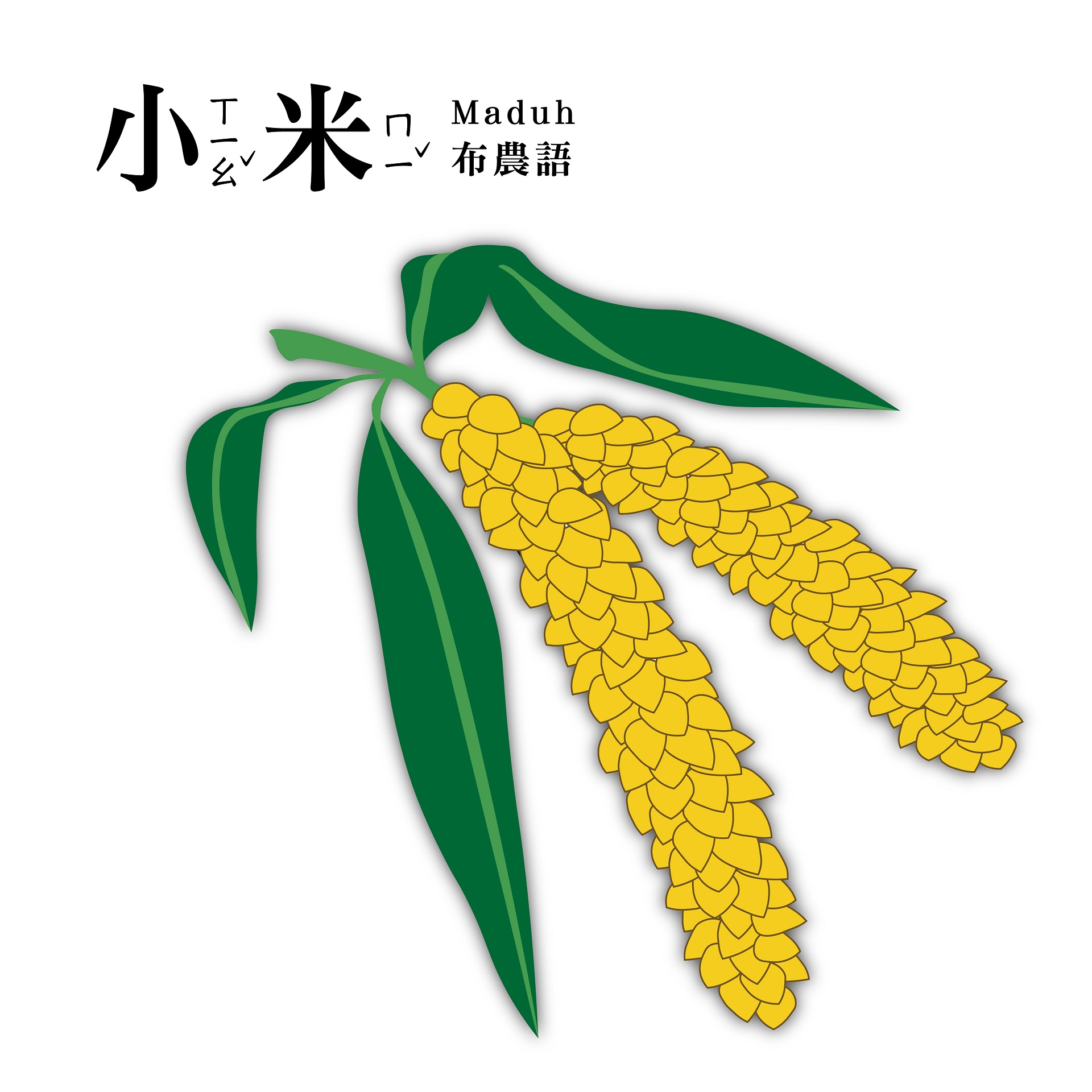date of issue:2021-06-16

小米 Maduh(布農語)
小米早在新石器時代就已經被種植,在各原住民族群的栽種歷史悠久,小米為一年生草本植物,開花期為5-10月,其具有抗病蟲、耐貯藏、生育期短的特性,且適合在乾旱缺乏灌溉的生長地區,就好似「大地之母」一樣供給族人們溫飽。在族人們的心中是為最神聖的作物,也是小米是各原住民族們重要的糧食作物之一,可供作煮飯、煮粥、釀酒、糕餅、點心等,其莖、稈、穀可當餵養家畜的飼料
除此之外,小米被原住民族視為一種神聖的作物,因此衍生出豐富的傳說與儀式文化等。在宗教上具有獨特的重要性,所有的農耕儀式都與小米有關,例如布農族的打耳祭、阿美族的豐年祭、賽夏族的矮靈祭裡都會出現紮束的小米。小米也象徵著財富,布農族人們曬小米的時候,若是小米曬得越多,越能顯示家族的富有
Maduh (the Bunun word for millet)
Humans have been farming millet for thousands of years, beginning in the Neolithic Age. Maduh is a millet with long-standing use by all aboriginal groups in Taiwan. Like other millets, it is an herb classified as annual (grows and dies within a year). Maduh in Taiwan blooms between the months of May and October. It is fast-growing, has insect repellant (and disease control) properties, can be stored for a long time, and – as if a blessing from Mother Earth herself – can be grown in poor soil during droughts. Maduh is eaten as rice or porridge, processed to make cakes and desserts, and fermented to brew wine. The plant’s stems, stalks, and leaf sheaths can be used as feed for livestock.
Across Taiwan’s aboriginal cultures, maduh is a uniquely sacred crop. This role is reflected in the abundance of legends and religious ceremonies in which it features. Maduh is central in the major aboriginal harvest ceremonies (including the Bunun Malahtangia festival, Amis Ilisin harvest festival, and the Saisiyat PaSta’ay festival), and more generally throughout the year is seen as a symbol of wealth and fortune. In Bunun tradition, maduh is displayed when being dried, and the amount on display symbolizes a household’s level of fortune.
